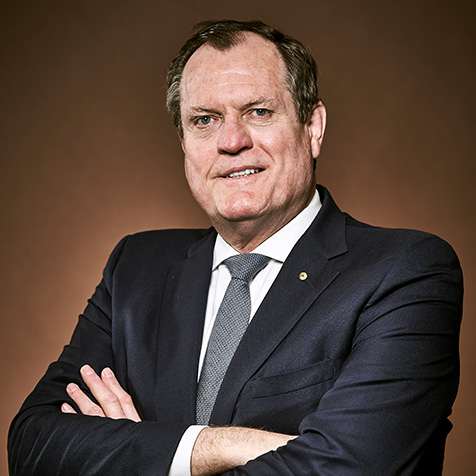Loading component...
At a glance
- The GST was passed as legislation in June 1999, and came into effect on 1 July 2000.
- Its primary goal was to simplify and overhaul the existing sales tax system and other state and territory taxes with a single 10 per cent tax.
- Australia’s annual consumption rates have been declining steadily, causing lower growth in GST revenue and prompting calls for an overhaul of the system.
At the start of 2000, millions of Australians celebrated like never before as they ushered in the beginning of a new year, a new decade and a new millennium.
Others, most notably the former Prime Minister John Howard and his treasurer Peter Costello, were doing the same, but they were also celebrating the dawn of a new taxation era for Australia – the imminent introduction of the GST.
The goods and services tax, part of A New Tax System (Goods and Services Tax) Act 1999, also known as ANTS, had been passed as legislation in late June 1999, and was due to come into effect on 1 July 2000.
Getting the GST over the political finish line had been a monumental effort, given earlier plans to introduce a broad-based national consumption tax had already cost former Liberal leader John Hewson the so-called “unlosable election” during his Fightback campaign just six years earlier.
When the Howard government went back to the polls in 1998, with a GST firmly on its election policy agenda, it was a big risk, but the major difference was that this time, the Coalition was much better prepared.
It had already invested thousands of hours honing the finer details of how such a tax would be applied and levied, and how it would be implemented. This involved tapping into the sharpest tax minds in the country to help build the detailed framework for the GST legislation.
The primary objective was to simplify and overhaul the existing sales tax regime and various other state and territory taxes with a single 10 per cent tax. All GST receipts would in turn be redistributed by the federal government to each state and territory.
Yet, to gain enough Senate numbers to pass its controversial legislation in federal parliament, the government was forced to make some key concessions. These involved agreeing to GST exemptions on items such as basic food and healthcare items, education courses and childcare costs.
The cracks in Australia's GST
Two decades on, the GST is well and truly entrenched in Australia, but it remains controversial. After a number of extensive reviews, there are widespread calls for a major overhaul of the existing system.
There have already been adjustments along the way. In 2017, the tax was amended to capture services provided in Australia by foreign companies such as streaming service Netflix.
In 2018, the government extended it to include imported items with a value of A$1000 or less to counter tax losses arising from the explosion in online shopping on international websites.
Australian Taxation Office (ATO) Deputy Commissioner Tim Dyce noted in a statement in 2018 that the low-value imports and digital services measures had been enormously successful, and showed “the leading role Australia is taking in adapting the GST to respond to the online marketplace”.
However, while close to A$70 billion will be raised from the GST in 2019/20 according to government estimates, annual consumption rates have been steadily declining for some time.
Rather than spending money, more working Australians are saving it. They’re taking advantage of record low interest rates to repay debts. At the same time, in line with an ageing population base, a growing proportion of Australians are spending more of their money on GST-free healthcare items.
There is also ongoing leakage of GST revenue from some businesses avoiding declaring taxable income through cash transactions. The federal government’s Black Economy Taskforce has estimated the economic impact of the black economy at 3 per cent of GDP, or approximately A$50 billion a year.
Lower growth in GST revenue places increasing pressure on states and territories to find a solution, with their GST funding streams becoming less stable.
GST reform: broadening the base
Ken Fehily CPA was one of the architects of Australia’s GST structure when, as an Andersen tax partner in the 1990s, he was appointed as an adviser to Peter Costello’s GST Technical Advisory Committee.

It was a role that ultimately earned Fehily the nickname “Mr GST” – which these days is not only the number plate on his car, but is also prominently tattooed on his right bicep.
“By and large, I think it’s been a very, very successful piece of legislation,” says Fehily, principal of Fehily Advisory and CPA Australia’s representative on the ATO’s GST Stewardship Group.
“However in my view, it [the GST] should be broadened to cover food, and consumer health and products – not a doctor’s visit but a Band-Aid and aspirin that you buy at the chemist in the supermarket.
“I also think the rate should be higher, but probably my biggest disappointment is, if you actually look at the title of the GST law, it’s called A New Tax System. Yet with all the carve-outs, it has not raised the revenue that it was hoped to.
“I know that, in some ways, it also contributes to the black economy because there’s still tax avoidance. Nobody likes to pay tax.
“Therefore, we didn’t get tax reform.”
Fehily hopes to see some reform on GST, such as broadening the base and deepening the rate, providing appropriate compensation, this being part of an overhaul of a broader tax reform.
Michael Evans, a former KPMG tax partner who was also part of Australia’s GST drafting and design team, comes from a similar standpoint. He says changing patterns of consumption over more than a decade means GST revenue as a percentage of gross domestic product is not growing at the same pace as the economy.
GST revenue now represents 3.4 per cent of GDP, compared with the OECD average of 6.8 per cent.
“By and large, I think it’s been a very, very successful piece of legislation. However, in my view, it [the GST] should be broadened... I also think the rate should be higher.”
“After 20 years, we’re behind where we started from. Expenditure on food is not growing. The exemptions on education, health, financial services, water and sewage are eroding revenue,” he says.
“The GST doesn’t look into the future – that is the big mistake that has been made.”
Evans, now a tax consultant and a senior fellow at the University of Melbourne for its Master of Tax program, says resetting the GST legislation to include exempted items will help restore tax revenue to previous GDP proportions.
Doing the GST calculations
Evans says the path of least resistance for the GST is to look at the areas that the government isn’t taxing. He refers to the famous Willie Sutton Rule, based on the statement from notorious US robber Willie Sutton (1901-1980), who said he chose banks as his targets “because that’s where the money is”.
In a recent presentation paper entitled Time to Double the Base not Double the Rate of GST, Evans calculated that the removal of GST-free status for food, water and sewerage, health, education and child care would increase GST revenues by A$22.5 billion.
Evans says removing input tax credit entitlements for non-commercial activities of government would increase GST revenues by a further A$17.3 billion, plus the removal of the ability to claim GST credits on purchases used for financial supplies would add another A$4.8 billion.
Paul Drum FCPA, CPA Australia’s head of external affairs, says the key question to ask is whether the GST is still fully fit for purpose.
“Economically, you’d have to say that getting rid of the terribly inefficient and very narrow-based sales tax, and replacing it and a range of other taxes with a broader-based consumption tax, was a major positive achievement at the time,” Drum says.
“Structurally, Australia’s tax system was far too reliant on taxing goods, and not taxing services.
“However, 20 years later, there are some significant cracks in it that need to be addressed, including the changing consumption patterns of the Australian population as it ages.
“For example, CPA Australia has submitted many times over the last decade that they need to go back to have a look at the GST base and the GST rate. We’ve done modelling looking at a broader base, bringing in some things that are currently GST-free, and also perhaps increasing the rate to 12.5 or even 15 per cent.”
CPA Australia resource:
Tax laws remain complex
While the 2010 Henry Tax Review (formally known as Australia’s Future Tax System Review) at the direction of the government did not inquire into increasing the rate or broadening the base of the GST, it still observed that “consumption is potentially one of the most efficient and sustainable tax bases available to government”, and that “empirical evidence indicates that a broad-based tax on consumption is one of the least damaging taxes to economic growth”.
The report also stated that “Many countries rely heavily on consumption taxes, levying them at rates well above Australia’s 10 per cent GST rate”.
“In the Henry report, they talked about how of 115 taxes, 10 taxes collected 90 per cent of the revenue,” Drum says.
“It begs the question, ‘How do we get rid of the other taxes?’, because that’s obviously inefficient.
“In this regard it perhaps should be looked upon as a work in progress. It’s not as if we got it absolutely right back in the year 2000. How does the GST fit given the challenges of the ageing population, and what should we do next?”
Fehily says his view is the GST should eventually be raised to 15 per cent, which would bring Australia in line with New Zealand.
“I mean, it’s now 20 years and it’s still 10 [per cent]. It should have gone to 12 or 14, 15 years ago.
“But I can’t see either of the major political parties being prepared to do that.
“So we’re stuck with what’s becoming a less viable tax after 20 years. I think the structure is good. The rates and base are wrong, and so is how it fits into the scheme of overall taxation.”
The Tax Commissioner remembers...
By David Walker
In 1999, former federal treasurer Peter Costello tapped Chris Jordan, then a KPMG partner, to chair a GST consultation body called the New Tax System Advisory Board.

Jordan, now head of the Australian Taxation Office, recalls that “the government was very concerned – no government had been re-elected after they’d introduced a broad-based consumption tax in their country”.
Jordan and then ATO chief Michael Carmody “did a huge amount of touring the country”, he says.
“I actually did talkback radio, media interviews, to explain to people what they needed to do, and to reassure people that if all these other countries could do it, we could too.”
The pressure was on, with many political observers considering the introduction of a new tax highly risky. “Many politicians said to me: ‘you will be judged’,” Jordan recalls.
“I thought, ‘I didn’t bring this in, I’m just helping [people] to understand the issues’.”
In 2001 the Coalition government that had introduced the GST won another term, with a swing towards it. “They did get re-elected,” he adds.
“It wasn’t the end of the world ... like all those other countries, our good small businesses that are generally smart, capable people implemented the right system and got on with their business.”

